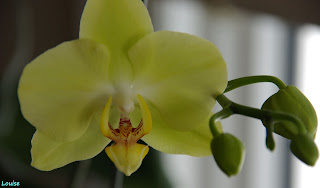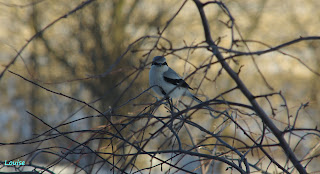Today was a day of mixed emotions. Somewhat happy because we were doing something good by delivering an injured owl to a rehabilitation centre and very sad because the owl got injured in the first place and it will likely never fly free again, if it survives.
 |
| Injured Barred Owl Strix varia |
Back to the beginning of this story, around 1 week ago an injured Barred Owl was found on the ground in a snowy field. It was brought to a local naturalist and friend, Audrey, who has nursed various injured birds over the years. With her care, the owl survived until it could be taken to a rehab centre. Arrangements were made to bring the owl to the Owl Foundation Rehabilitation Centre in Vineland Ontario, a unique facility that focuses in helping injured or orphaned wild Canadian owls. It is a registered charity that operates on donations. We volunteered to deliver the owl, accompanied by Audrey and friend.
And so today, the owl’s new journey began, not on wings but in a cardboard box.

2 ½ hours later we arrived in Vineland and we were welcomed warmly by Kay McKeever, who with her husband Larry, founded the Owl Foundation in the 1970’s. The property is spread out on the bank of a river, comprised of a house, several out buildings and enclosures, some very large (600+sq.ft.) to allow large raptors to practice flying before release into the wild.
Some owls, permanently disabled and unable to survive in the wild live out their lives in peace at Kay’s. We were greeted by one of Kay’s owls “Big Bird”, a very beautiful and gentle Great Gray Owl with a permanent vision impairment. Great Grays live and breed in the far north where they don't normally meet up with cars, but sometimes they come further south in winter in search of food and sadly get acquainted with cars by getting hit...
 |
| "Big Bird" Great Gray Owl Strix bebulosa |
Some of the permanent residents live in comfort in outdoor enclosures, create pair bonds and mate. Others become foster parents to orphaned owls who will later be released. It’s a magical place, full of sadness but also very much full of hope.
 |
| Tiny Northern Pigmy Owl Glaucidium gnoma peeks down at us |
Some photos are a bit blurry due to low light conditions and no use of flash.
Kay, is a walking encyclopedia on all things “owl” and we could have listened to her all day as she showed us owl skeletons and the bank of close-circuit TV screens where she monitors activity in the enclosures.
 |
| Newly arrive Hawk Owl |
Our Barred Owl was examined upon arrival and we were told that he was a young male from 2010, that he had been hit by a vehicle, with serious injuries to his eyes, ears, a broken talon and scrapes. He was also emaciated. Sad news, with damage to ears and eyes, he is an unlikely candidate for future release. Owls rely on both sight and hearing to hunt.
We left the sad-looking little owl in good hands, not knowing where his journey will take him, but they promised to update us on his status.
 Each year across Canada and elsewhere, owls and hawks are hit by cars while hunting by the roadside. Why are they hunting in such a dangerous place you might wonder? Mice are drawn there by the garbage people toss out of vehicle windows. Whether it’s an apple core or fast food remnants, mice and other rodents are attracted to it. Other animals such as raccoons, skunks, foxes, bears etc are also killed when attracted to this roadside buffet. So please spread the word, DON’T LITTER there are very good reasons not to litter.
Each year across Canada and elsewhere, owls and hawks are hit by cars while hunting by the roadside. Why are they hunting in such a dangerous place you might wonder? Mice are drawn there by the garbage people toss out of vehicle windows. Whether it’s an apple core or fast food remnants, mice and other rodents are attracted to it. Other animals such as raccoons, skunks, foxes, bears etc are also killed when attracted to this roadside buffet. So please spread the word, DON’T LITTER there are very good reasons not to litter.
For more information about owl rehab, what to do if you find an injured raptor or to donate to the Owl Foundation, please visit this wonderful website:

 From there he watched the activity at the bird feeder, then maybe deciding it was still too cold, he retreated back to the comfort of his winter den. Even the peanuts I scattered on the ground could not entice him to come under the feeders. When you’re at the bottom of the food chain, you’re very cautious.
From there he watched the activity at the bird feeder, then maybe deciding it was still too cold, he retreated back to the comfort of his winter den. Even the peanuts I scattered on the ground could not entice him to come under the feeders. When you’re at the bottom of the food chain, you’re very cautious.
































